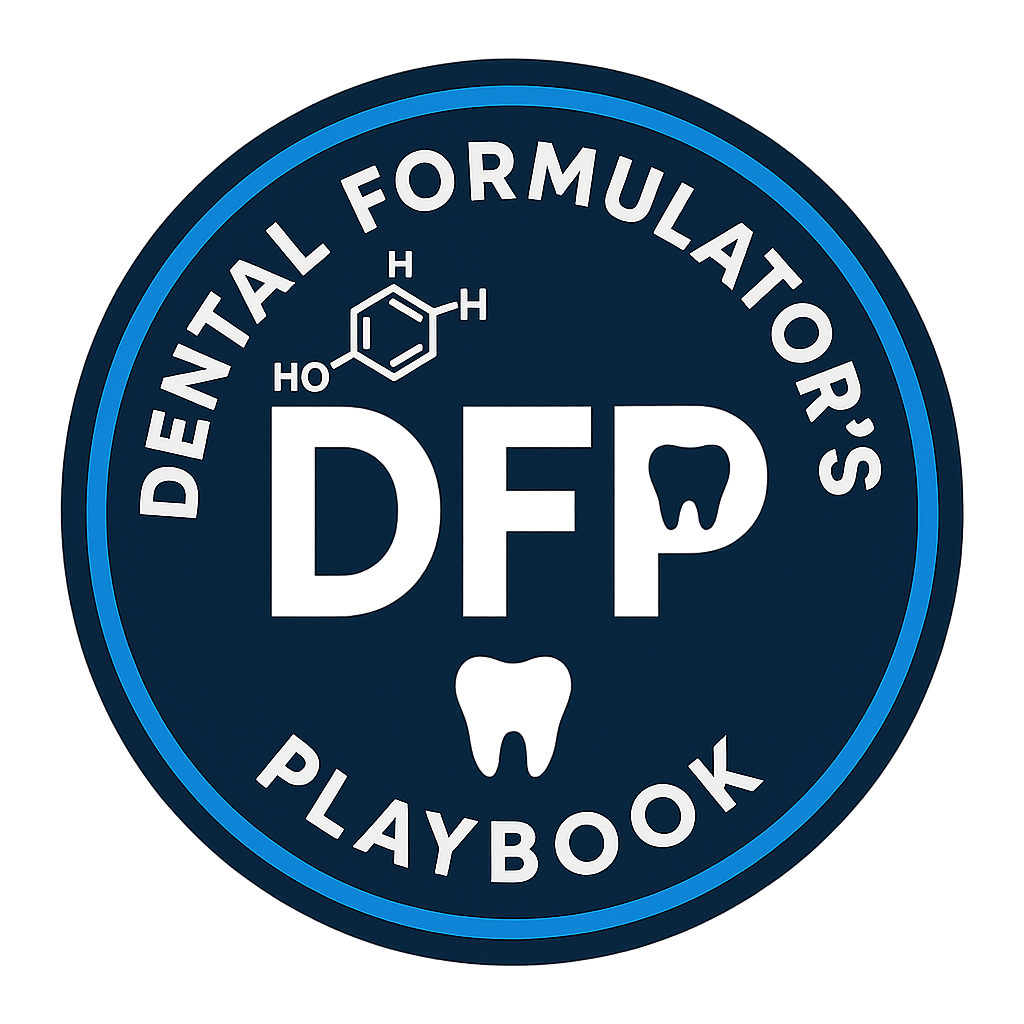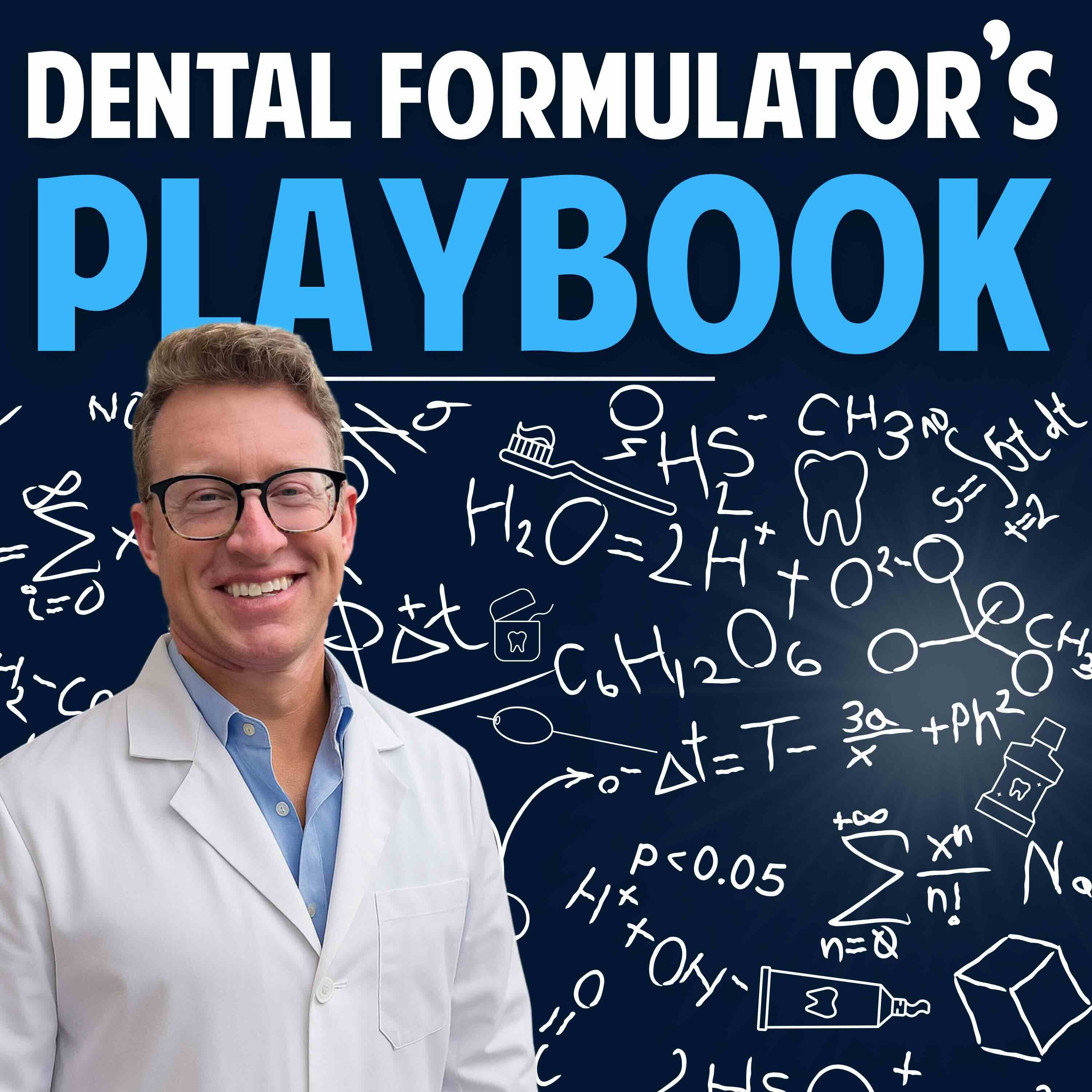13: Mouthwash Exposed – The Shocking Science Behind What You’re Actually Rinsing With!
Do you really know what’s in your mouthwash—or are marketing claims rinsing away the truth?
In this episode of Dental Formulator’s Playbook, Dr. Robert L. Karlinsey and co-host Tami conduct a “formula forensics” breakdown of three mouthwash types—alcohol-based essential-oil rinses (Listerine Antiseptic), zero-alcohol cosmetic rinses, and CPC-based clinical formulations. With scientific precision, they dissect ingredient labels, debunk marketing claims, and clarify what truly makes a mouthwash effective and safe.
The episode highlights the importance of formulation strategy, regulatory compliance, and proper testing—essential insights for brands, formulators, and curious consumers alike.
🔥 Highlights ↠
- Preservative Panic: Not all preservatives are bad—some are nature-derived and critical for preventing microbial contamination. Dr. Rob and Tami caution against “preservative-free” claims that may hide formulation risks.
- Mouthwash 101: The hosts review several commercial products, including Listerine Cool Mint (antiseptic & zero-alcohol versions). Legacy brands, which are inherently subject to more risk, choose to adhere to established FDA guidelines.
- Alcohol & Essential Oil Combo: Listerine Antiseptic combines 21.6–26.9% alcohol with four FDA-approved essential oils (menthol, thymol, eucalyptol, methyl salicylate) — required together to support OTC drug claims such as “anti-gingivitis” and “anti-plaque.”
- OTC vs. Cosmetic: The zero-alcohol variant cannot legally make therapeutic claims because it lacks the necessary actives. However, marketing language and brand trust often imply comparable benefits without violating regulations.
- The ADA Seal: Products like Listerine Antiseptic hold the ADA Seal, granted only after two independent three-month clinical trials. The seal adds credibility but isn’t mandatory for OTC status.
- CPC Mouthwashes: A look at a Parodontax rinse with 0.07% cetylpyridinium chloride (CPC), another FDA-approved anti-plaque active. Dr. Rob explains how flavor systems, sweeteners, and surfactants can affect CPC’s bioavailability.
- Prescription Chlorhexidine Rinses: 0.12% chlorhexidine offers potent antimicrobial action but can be overly harsh, disrupting the oral microbiome. Recommended for short-term professional use only.
- Game of Claims: Brands strategically layer ingredients to support or suggest efficacy. The hosts teach listeners to spot phrases like “kills 99.9% of bacteria” and determine whether such claims are backed by validated testing.
- Preservation Systems Matter: Effective formulations often use dual-component systems (e.g., benzoic acid + sodium benzoate). Challenge testing (ISO 11930) ensures long-term microbial safety in water-based products.
- Color & Flavor Strategy: The duo examines dyes (Green 3, Blue 1) and complex flavor blends containing terpenes or acids—key not just for taste but for product stability, consumer perception, and compliance.
Key Takeaways
- Look closely at labels — learn the distinction between active and inactive ingredients and what’s required to make legal claims.
- Even cosmetic mouthwashes must be tested for safety and stability.
- Smart formulation demands a balance of science, regulation, and consumer expectations.
📲 Connect with Dr. Rob (Robert L. Karlinsey, PhD)
🌐 Website: customdentalformulations.com
📄 Research Profile: Robert Karlinsey on ResearchGate


